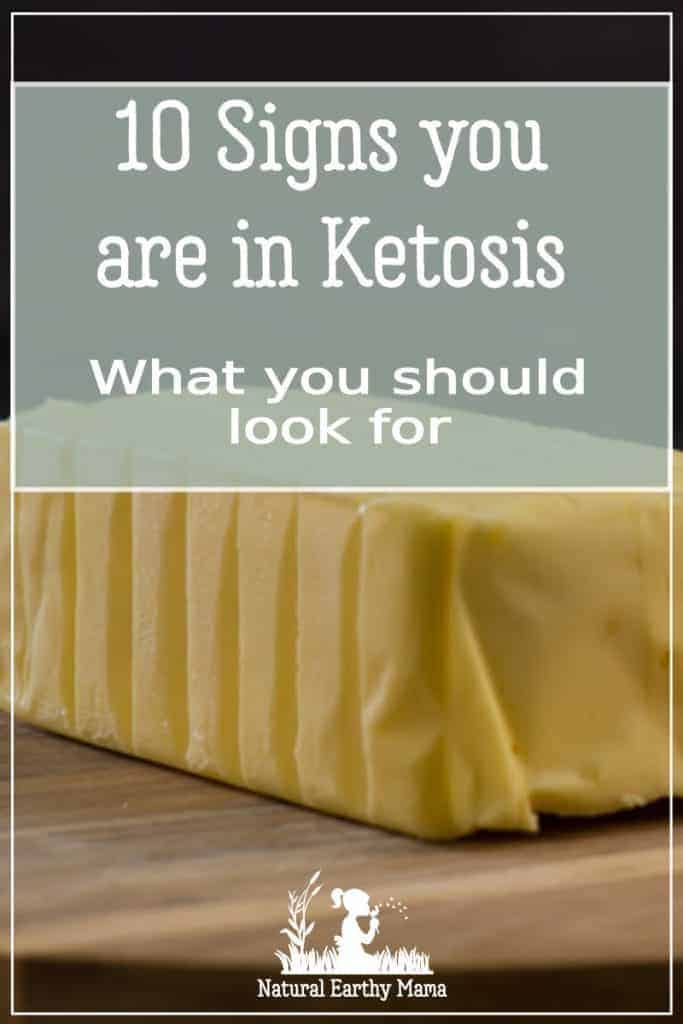 If you are new to the ketogenic diet you are probably wondering how do I know if I am in Ketosis yet? This is different for everybody. Some people slip in to ketosis easily, others may take weeks for it to kick in.
If you are new to the ketogenic diet you are probably wondering how do I know if I am in Ketosis yet? This is different for everybody. Some people slip in to ketosis easily, others may take weeks for it to kick in.
The ketogenic diet is a popular, science based, effective way to lose weight and improve overall health outcomes.
Please read: This information is provided for educational purposes only and is not intended to treat, diagnose or prevent any disease. We encourage you to make your own health care decisions in partnership with a qualified health care professional.
This post contains affiliate links, this means at no extra cost to you, we make a commission from sales. Please read
our Disclosure Statement
When followed correctly, this low-carb, high-fat diet will raise blood ketone levels, which is a GOOD thing. Ketones provide a new fuel source for your cells, and cause most of the unique health benefits of this diet.
Your brain can only run of two energy sources, glucose (from sugar) and ketones (from fat breakdown).
When you stop eating carbohydrates in vast quantities, your liver starts producing large amounts of ketones to supply energy for your brain.
It can often be hard to know whether you’re “in ketosis” or not.
What is ketosis?
If you have heard of the keto diet (if not click here), it is likely you have heard the word ketosis thrown around.
You can purchase these sticks as one of the easiest ways to check for ketosis…But you may be wondering what does ketosis actually mean and how do you achieve ketosis.
Okay, so the keto diet is a way of eating that requires you to eat very high amounts of quality fats, moderate protein, and very limited carbohydrates.
Clearly this is not how our culture usually eats, so there are changes that your body will go through as you enter into ketosis.
We think of ketosis in terms of three levels
The first is when you begin the keto diet. This can be a very confusing time for your body and your body will react in certain ways.
Your body is so used to using carbohydrates and sugar as the main source of fuel.
So, when you suddenly cut this out (or limit it), your body will go into survival mode and this is when cravings set it.
You MUST push through this, and no, it’s not easy!
This is where the keto flu may set in.
The keto flu is similar to the normal flu. However, it is due to your body adjusting to the lack of sugar and carbohydrates rather than you ‘catching the flu’.
Trust me, you are going to want to avoid it if you can!
The second level is the beginning ketosis, when your body begins to be fat adjusted.
This is when your body has gotten over the shock of cutting out it’s carbohydrate/ sugar fuel and it is now happy to start considering using the fat source you are now providing it.
This is the beginning of ketosis
You will want to keep your fluids up in this stage. I actually found I need to add extra electrolytes during this stage.
I felt incredibly thirsty despite drinking water constantly. Then I finally worked out it was the lack of salt in my diet that was causing my body to not be able to retain the water.
I quickly added both sea salt and Himalayan salt to my diet and I did start to feel better.
The third stage is when you are finally in ketosis.
As you move through the stages and into ketosis you will start to notice some of the benefits below, however it is not until you are in total ketosis that you totally reap the benefits.
If you are new to the keto diet, or want some real information about getting started then you should check out our Keto Kickstarter Challenge.
10 common signs that you are in ketosis.
1. Bad Breath – ketones on the breath
It’s actually a common side effect. Many people on ketogenic diets and similar diets, such as the Atkins diet, report that their breath takes on a ‘fruity’ almost alcoholic smell.
This is caused by elevated ketone levels. The specific culprit is acetone, a ketone that exits the body in your urine and breath. Yes you have heard that name before, acetone is also what they used to put in nail polish remover before they found cheaper, stonger options.
While this breath may be less than ideal for your social life, it can be a positive sign for your diet. Many ketogenic dieters brush their teeth several times per day, or use sugar-free gum to solve the issue.
If you’re using gum or other alternatives like sugar-free drinks, remember to check the label for carbs!
The bad breath usually goes away after some time on the diet. It is not a permanent thing.
2. Weight Loss
A Ketogenic dietis a highly effective method for losing weight. As dozens of weight loss studies have shown, you will likely experience both short- and long-term weight loss when switching to a ketogenic diet (1, 2)
Fast weight loss can occur during the first week. While some people believe this to be fat loss, it is primarily stored carbs and water being used up, if you ahve a carb binge, it will all come back on very quickly.
After the initial rapid drop in water weight, you should continue to lose body fat consistently as long as you stick to the diet and remain in a calorie deficit.
RELATED POST: How to keto like a girl
3. Increased Ketones in the Blood
One of the hallmarks of a ketogenic diet is a reduction in blood sugar levels and an increase in ketones. As you progress further into a ketogenic diet, you will start to burn fat and ketones as your main fuel sources.
The most reliable and accurate method of measuring ketosis is to measure your blood ketone levels using a specialized meter that measures beta-hydroxybutyrate (BHB).
Nutritional ketosis is defined as blood ketones ranging from 0.5–3.0 mmol/L.
4. Increased Ketones in the Breath or Urine
Another way to measure blood ketone levels is a ketone breath analyzer which measures acetone levels in your breath.
Or you can measure the presence of ketones in your urine on a daily basis with special indicator strips, these are super affordable.
These measure ketone excretion through the urine and can be a quick and cheap method to assess your ketone levels daily. However, they are not considered very reliable because as your body becomes better at using and regulating the use of ketones, you will waste less and less of them through your pee.
5. Less hungry
Many people report decreased hunger while following a ketogenic diet. This is because once your insulin levels are lowered and kept low, your leptin signal can be heard again by your brain. Leptin is secreted by fat cells and tells your brain that you do not need to eat, as there is plenty of energy stored.
The ketones themselves may also affect the brain to reduce appetite (3).
If you feel full and don’t need to eat as often as before, then you may be in ketosis.
6. Less tired and less brain fog
People often report brain fog, tiredness and feeling sick when first starting a very low-carb diet. This is termed the “low carb flu” or “keto flu.” However, long-term ketogenic dieters often report increased focus and energy.
When you start a low-carb diet, your body must adapt to burning more fat for fuel, instead of carbs by building more mitochondria.
Ketones are an extremely potent fuel source for the brain. Therefore, it comes as no surprise that long-term ketogenic dieters often report increased clarity and improved brain function.
Once your blood sugar is no longer swinging and crashing, your energy levels will become much more sustained.
7. Short-Term Fatigue
The exhaustion that comes with the initial switch to a ketogenic diet can be one of the biggest issues for new dieters. These side effects are natural. After several decades of running on a carb-heavy fuel system, your body is forced to adapt to a different system.
As you might expect, this switch does not occur overnight. It normally requires 7–30 days before you are in full ketosis. It takes this long for your body to grow more mitochondria that are needed to metabolize the fat as energy.
To reduce fatigue during this switch, drinking bone broth daily will help and is strongly recommended.
Ideally you will be getting about 2,000–4,000 mg of sodium, 1,000 mg of potassium and 300 mg of magnesium per day.
8. Digestive Issues
A ketogenic diet generally involves a major change in the types of foods you eat. Digestive issues such as constipation and diarrhea are pretty common side effects in the beginning.
Most of these issues should settle down after a week or two, but it may be important to be mindful of different foods that may be causing digestive issues.
Also, make sure to eat plenty of healthy low-carb veggies. They are low in carbs but still contain plenty of fiber. If you are constipated, try adding a tablespoon of coconut oil or two to warm water to drink first thing in the morning.
9. Cycle upsets
For women, the first month or two on the keto diet, you may find that your cycle is very different. This can be due to a big upswing in the amount of estrogen in your blood stream.
This is a tempory state caused by the de-congestion of your liver, combined with the breakdown of fatty tissue, that stores and produces estrogen.
This will settle down after a few months, and many women (especially those with PCOS, endometriosis or fibroids) find their cycles are much better on the keto diet.
RELATED POST: How Keto cures PCOS
10. Insomnia
One big issue for many ketogenic dieters is sleep, especially when they first change their diet. A lot of people report insomnia or waking up at night when they first reduce their carbs drastically.
However, this usually improves in a matter of weeks.
Many long-term ketogenic dieters claim that they sleep better than before after adapting to the diet, others find that they can live off of a lot less sleep, as their body run so efficiently on the ketones.
Ultimately, if you are following all the guidelines of a ketogenic diet and you stay consistent, then you should be in some form of ketosis, if you are cheating even twice a week, can be enough to keep you out of ketosis.
If you want a more accurate assessment, monitor ketone levels in your blood, urine or breath on a weekly basis.
However, if you are losing weight, enjoying your ketogenic diet and feeling healthier, then there is no need to obsess over your ketone levels.

